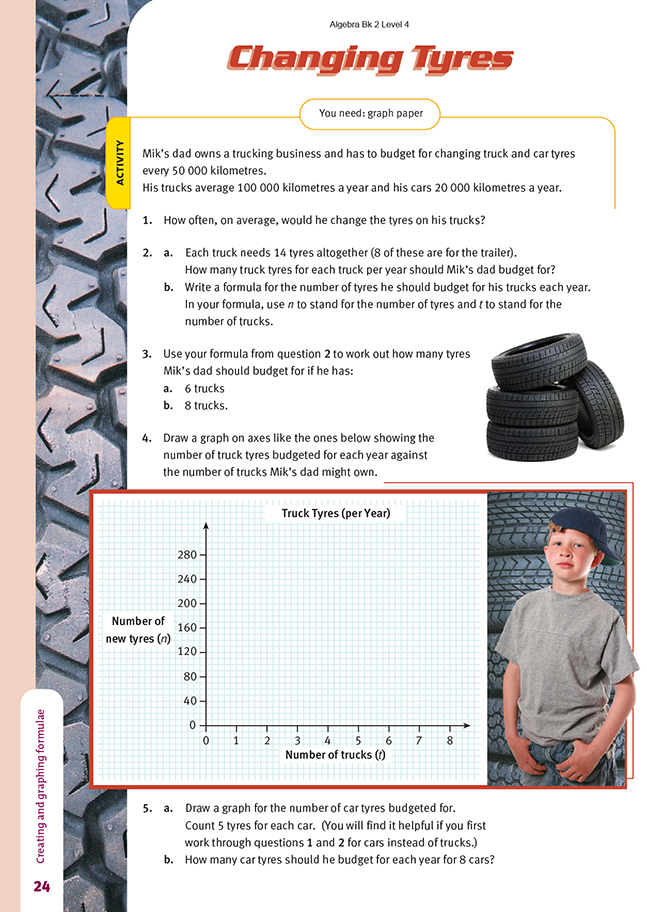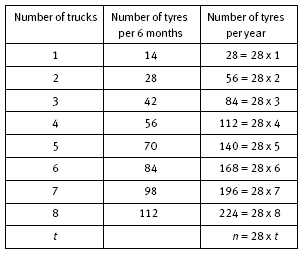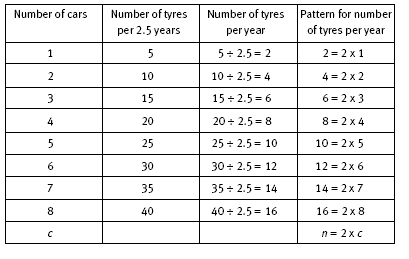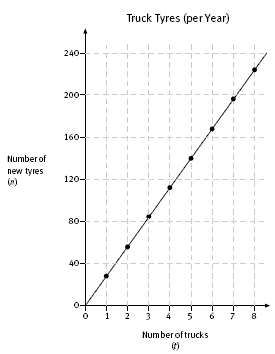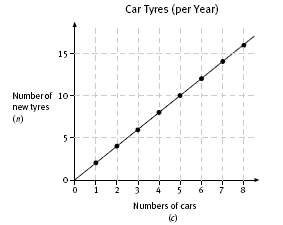This is a level 4 algebra strand activity from the Figure It Out series.
A PDF of the student activity is included.
Click on the image to enlarge it. Click again to close. Download PDF (239 KB)
use a graph to show a relationship
FIO, Level 4, Algebra, Book Two, Changing Tyres, page 24
graph paper
In this activity, students reason through practical situations to enable them to write algebraic formulae representing the situations.
The table below may help the students to see the relationship between the number of trucks and the number of tyres that should be budgeted for annually.
The pattern shows that if the number of tyres to be budgeted for annually is n and the number of trucks owned is t, the formula n = 28 x t (or n = 28t) can be used to work out the annual truck tyre budget.
The following table shows a similar relationship for budgeting for the annual purchase of car tyres. Note that car tyres, on average, last 50 000 kilometres and, on average, cars travel 20 000 kilometres annually, so it takes, on average, 50 000 km ÷ 20 000 km per year = 2.5 years before car tyres should be changed.
The pattern in the final column shows that, if the number of tyres to be budgeted for annually is n and the number of cars owned is c, then the formula n = 2 x c (or n = 2c) can be used to work out the annual car tyre budget.
Some students may have difficulty calculating that, on average, Mik’s dad will need 2 new tyres for each car per year. The following argument may help: Consider just one car and assume that Mik’s dad changes all the tyres at the same time. Each tyre lasts for 2.5 years, so every 2.5 years, Mik’s dad will need to change all 5 tyres. Therefore, every 5 years, Mik’s dad will need 10 new tyres. This is the same as buying 2 new tyres each year.
Answers to Activity
1. Every 6 months
2. a. 28 new tyres per truck
b. n = 28 x t, which is usually written as n = 28t
3. 6 trucks need 168 new tyres each year, and 8 trucks need 224 new tyres each year.
4.
5. a. The car tyres last for 50 000 km. On average, Mik’s dad’s cars travel 20 000 km each year. So, on average, the car tyres last 2.5 years. Each year, Mik’s dad should budget for 5 ÷ 2.5 = 2 tyres per car. If the number of tyres to be budgeted for is n and the number of cars owned is c, a formula that could be used to budget yearly for car tyres is n = 2 x c or n = 2c.
b. 16
